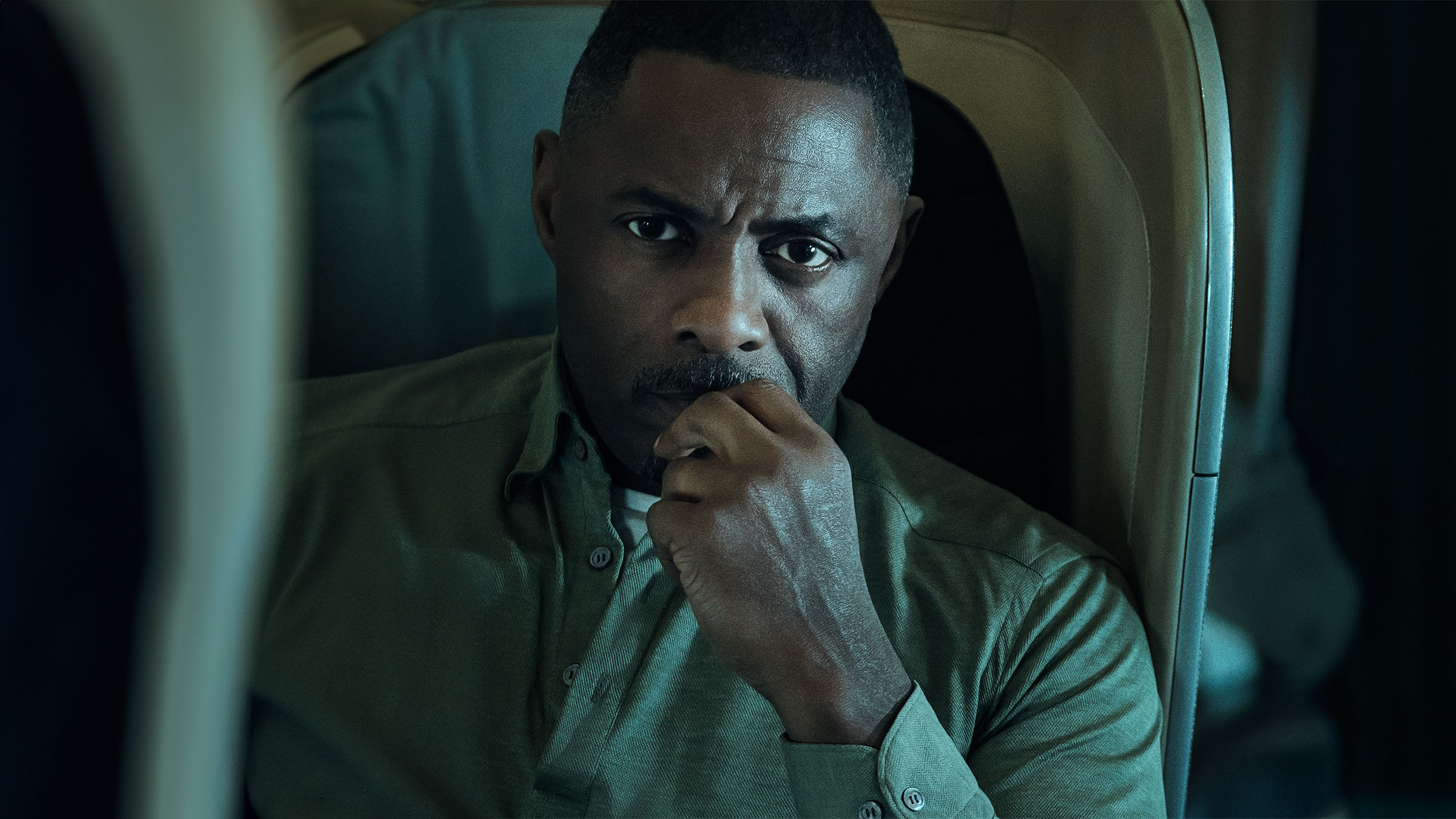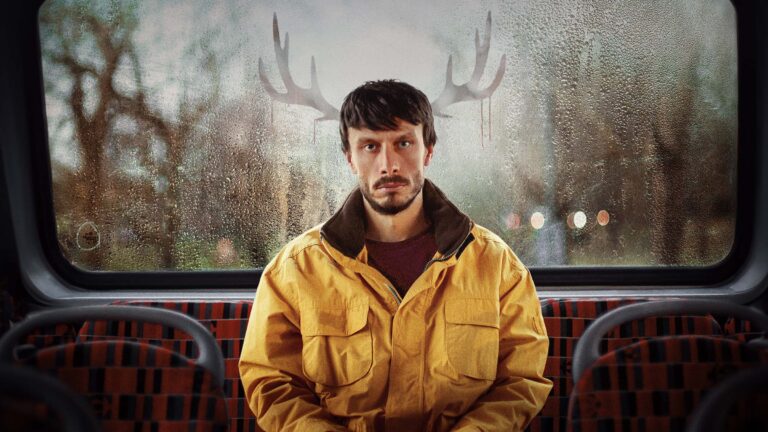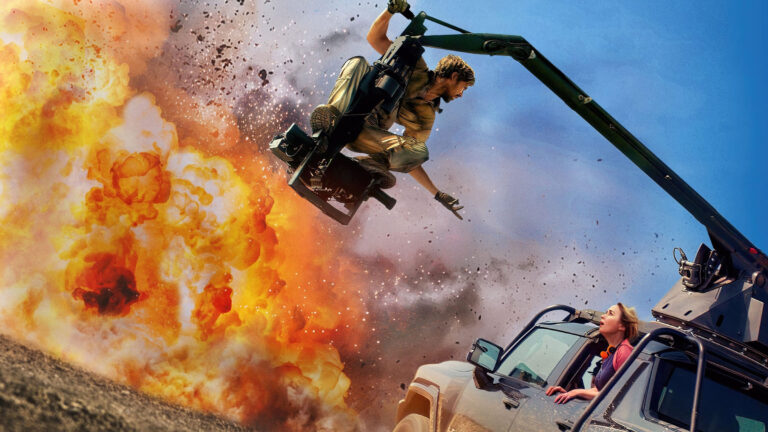Hijack editors David Webb and Robert Frost have logged many sky miles together in the cutting room, but mostly with Rob as David’s assistant. That all changed when David tapped Rob to take on full editing duties for their previous collaboration, Litvinenko (2022); a critically acclaimed series directed by Jim Field Smith for ITV.
Hijack is a seven-part miniseries created by George Kay and Jim Field Smith that premiered June 28th, 2023 on Apple TV+. It is a pseudo real-time account of the hijacking of Kingdom Air Flight KA29, during its seven-hour journey from Dubai to London. On board the flight is corporate negotiator Sam Nelson (Idris Elba), who tries to use his professional skills to save everyone on board.
In our discussion with Hijack editors David Webb and Robert Frost, we talk about:
- Making the move to the editor’s chair
- Telling tales in real time
- Cutting first, watching dailies later
- Serving up a visual sorbet
- Perfecting the practical effects in the cutting room
Listen while you read…
Editing Apple TV’s Hijack
Matt Feury: David, you’ve worked with Hijack co-creator Jim Field Smith for about a decade now, having done several TV series with him. Therefore, I think it’s safe to assume he was the one who reached out to you about Hijack. Tell me about how you got on the show and, if it was indeed Jim who called you, what did he tell you about the show?
David Webb: It was exactly that, and you’re right, it has been about ten years since we started working together. I met Jim cutting a Heinz baked bean commercial.
MF: I don’t know why that’s funny, but it is.
David Webb: That’s in my other life, cutting commercials, and we just got along. We were simpatico in our tastes. I’ve cut everything that he’s done in the UK since then.
I’ve heard of various projects that may or may not have happened over the years, and this was one that actually made it onto the screen. Jim was the one that reached out to me. We’d just done a show for ITV called Litvinenko, which was Rob’s first gig as an editor, so it was a shoo-in that Rob came with us on the Hijack journey. What did he tell us about it, Rob? I guess he told us the basic premise.
Robert Frost: Yeah, the basic premise. I knew that you were going on to it. I was on Litvinenko, but I genuinely didn’t think that it would be something that would come my way, just because the way Jim was talking about it sounded so huge.
He didn’t mention it to me directly. That was Peter Heslop, the producer. I got a random email one afternoon saying, “They want you for it” and I thought, “Why is Jim not mentioning this to me?”
I asked him what it was about and he gave us the whole idea: seven hours real-time, seven one-hour episodes on a plane, Idris Elba, but it’s not what you think. He’s playing a thinking man. He’s not going to be running around with a gun all the time. It sounded great.
Idris Elba, but it’s not what you think.
MF: Rob, you’ve worked with Jim Field Smith before, but you and David have had a working relationship for some time. Primarily, he’s his first assistant editor.
As you’ve both pointed out in your previous project, Litvinenko, you moved up to full-time editing duties. That’s kind of the $64,000 Question, or whatever that translates to in pounds. That’s the question that every assistant wants to know: How do I get my big break? What is the path to moving up? How did it happen for you and David?
Robert Frost: I had been a second assistant on all sorts of other shows. What’s nice about being a second is you jump around a bit more and you get to meet a lot of different people. But when I got the opportunity to work on Sex Education, we got on so well that I ended up working with Dave on everything else that he did.
Everyone that I talked to has a different story. For me, it was the fact that we had similar sensibilities. Dave, you involved me more and more with each project, right? You included me on what you were doing and how you were doing it.
David Webb: You know what? It’s a really hard thing to describe how the step up happens. It’s a combination of multiple factors. But what are those multiple factors?
The fact that Rob always goes the extra mile on everything and he’s very personable. He always got involved with the directors on every project that we’ve ever worked with, so they felt at ease and confident in his abilities. That was hugely beneficial.
But there is also a point at which you’ve got no credits and someone has to just take a punt. I guess it was good fortune that the project that Jim was doing was for ITV, which is a smaller network, with smaller budgets. I say ITV is a smaller network. It’s one of our national networks.
Robert Frost: They don’t have Netflix money.
David Webb: Yes, it was a relatively small budget. If I’m honest, the conversation went like this: “Should we get Rob to do it?” and the answer was yes. The caveat was that, if it all goes bad, I’d step in and cut more episodes.

Robert Frost: Because we were on Sex Education season three, I knew that you were going to be doing Litvinenko. I was going to assist and you were going to cut all four episodes. Then the schedule shortened a bit and that became less doable.
I was busy doing a turnover and you came into the back of the room, sat down, and said, “You should cut on Litvinenko.” You called Jim. I couldn’t hear what he was saying. Then you hung up and said, “Yeah, it’s going to happen.” Originally, I was going to do one episode and then that turned into two when it got even busier.
David Webb: That’s the amazing thing. You have that confidence, but until you’re given the opportunity, no one on either side of that equation knows that it’s going to work out. With Rob, it absolutely did work out how you’d imagine, so much so that I was more than happy to give him another episode, so that we could do the best job of it.
MF: David, you, Jim, and Rob have worked together for some time. Jim directed most of the episodes except for two. They were directed by Mo Ali And those episodes were cut by another editor, Natasha Wilkinson.

Did you guys stick together because of your preexisting working relationship? Or were there other considerations in play when determining which episodes each of you would edit with which director?
David Webb: The thing we always talk about before a project is, you should use one of the other editors with the second or third block director, so that stylistically things are the same.
As it turns out, it never works out that way because of shooting schedules. Once you’re cutting an episode, you’re usually doing the fine cut of block one as they’re shooting block two. It becomes impossible to assemble and fine cut at the same time. It’s always our intention to have that continuity, but it never seems to work out the way we want it to.
It was tough for Mo and Natasha. They’d never worked together, and neither had ever worked with Jim, who was essentially showrunning Hijack, because he’s the show creator with George Kay, the writer.
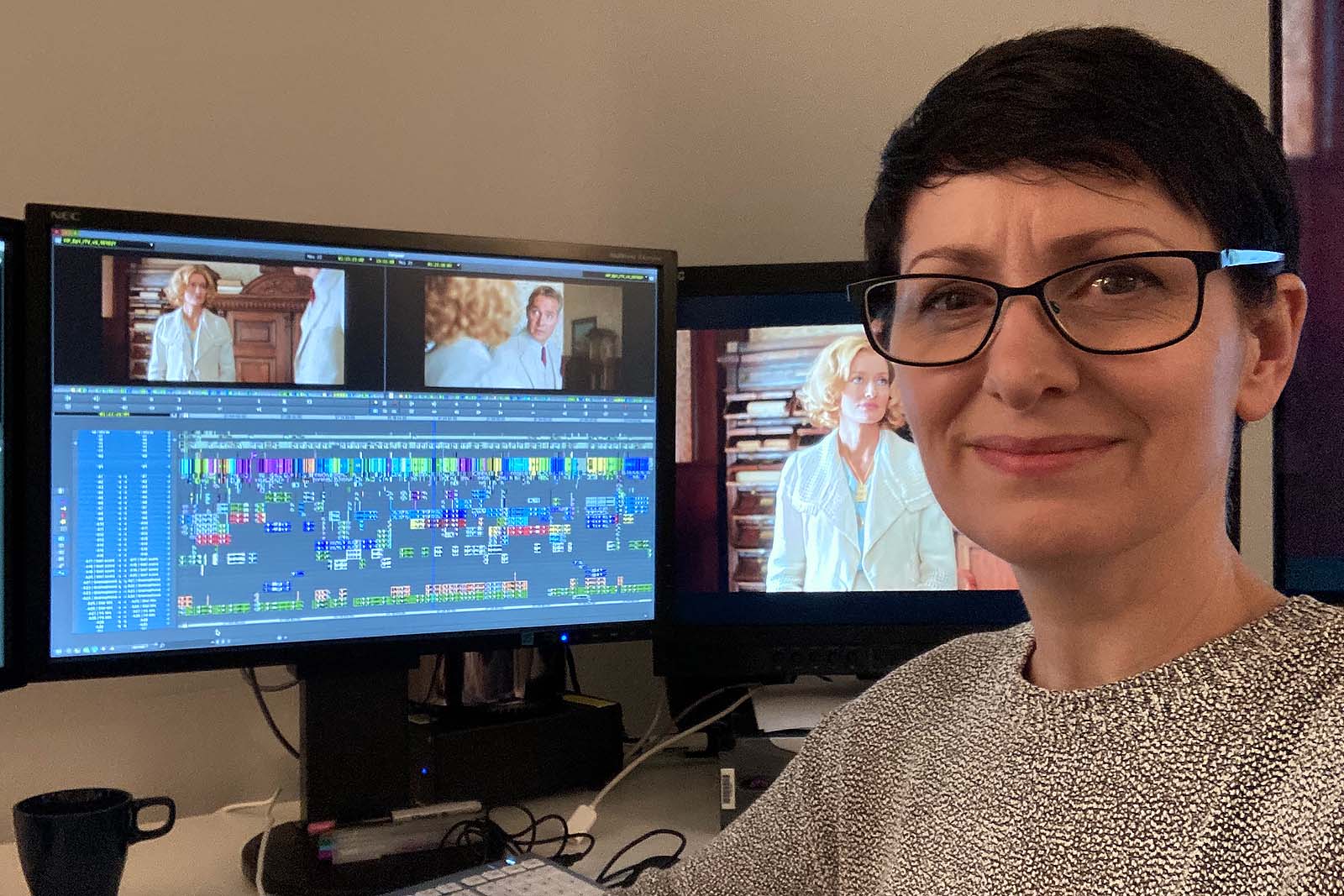
It was a tough gig for them. Mo was trying to work within a framework and Natasha was trying to put her own spin on a show that needed to be stylistically consistent.
Robert Frost: By the time they were in the fine cut, Jim was back to shooting the final two episodes with us. Then we were really busy assembling those. It was really difficult for them to get his notes and his eyes on things.
David Webb: There’s a weird thing in the UK where we’ve always had smaller budgets than our US counterparts. But as the streamers have invested more and more and the scale of the shows have become bigger, that notion of the US showrunner style becomes more needed for consistency. If there isn’t a common creative thread, it’s hard to maintain a style over an eight, ten, or twelve-episode season.
If there isn’t a common creative thread, it’s hard to maintain a style over an eight, ten, or twelve-episode season.
MF: I wanted to return to something that Rob mentioned. The real-time component of HIjack is the headline for a lot of the articles that I’ve read. The show takes place on a seven-hour flight from Dubai to London, and it plays out over the course of that same seven hours. Did that change your way of working at all? Did it hinder you in any way, knowing that you had to make sure this show fit into that format?
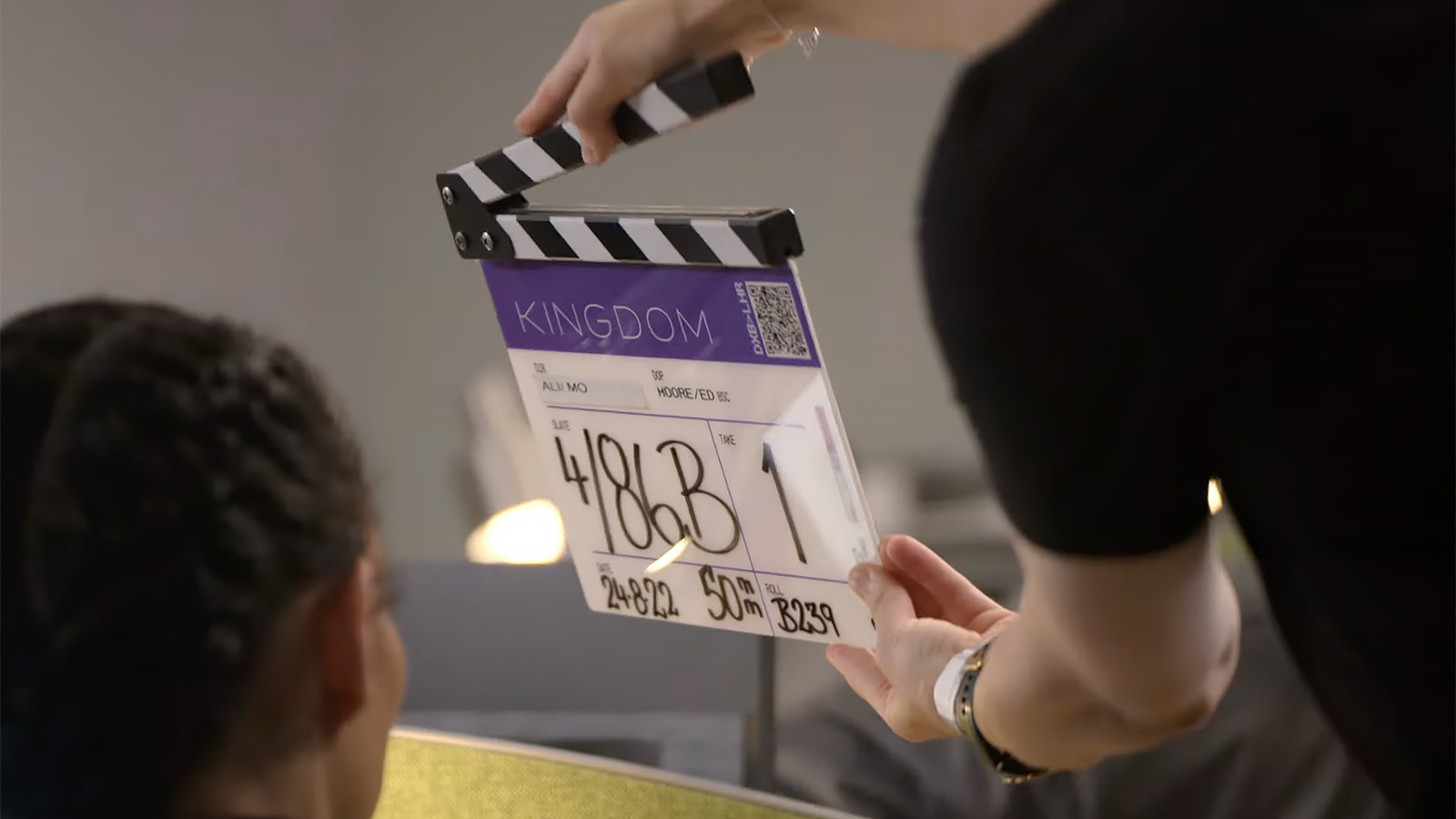
Robert Frost: Yes. The scripts were really good and tight and well-written, and a lot of the intercutting was there in the scripts. But they were sixty pages long. It was sixty pages, sixty minutes, one hour per episode, but Apple wanted forty-five-minute episodes. So we had to cut and compress things without it feeling like that was happening.
David Webb: Some of them were even longer. Some of them were something like seventy-five-page scripts. There’s a bit of a to-and-fro with this notion of real-time. Maybe there always is with these kinds of shows.
24 had ad breaks. The characters could move during the ad breaks to get to a different location.
George, the show creator, was initially adamant that it was a sixty-minute show, so it had to be sixty minutes of real time. Therefore, it’s sixty minutes of screen time. But it became apparent that that wasn’t going to necessarily work for every episode. Some episodes needed to be tighter than that. The shortest episodes are what, Rob, forty-five minutes?
Robert Frost: Something like that. That was the length of 24. When we were talking about this show, we were thinking about 24. Growing up, I loved 24. But even then, that show was forty-five minutes. But 24 had ad breaks. The characters could move during the ad breaks to get to a different location. We didn’t have that.
MF: You didn’t have the ad breaks, but what about intercutting? Most of the action takes place on the plane, but then you go to what’s happening on the ground. Was that where you do some of that creative intercutting, to make sure you’re staying on schedule?
David Webb: Absolutely. Weirdly, we didn’t have that so much in the first episode. I think we were on the plane for twenty-odd minutes of screen time. We didn’t even stick to the linearity of it then. We still cut through it. It wasn’t literal screen time. We were able to abridge the takeoff sequence with cutaways. Still, it’s all moving in one direction. There are no flashbacks, but it’s not strictly real-time.
Robert Frost: I remember the end of episode six, when Sam (played by Idris Elba) has gotten up and he’s attacking Stuart (played by Neil Maskell) on the plane. Meanwhile, there’s the raid happening at the airfield. We found that certain beats needed to happen on the ground, because they connected to the plane.
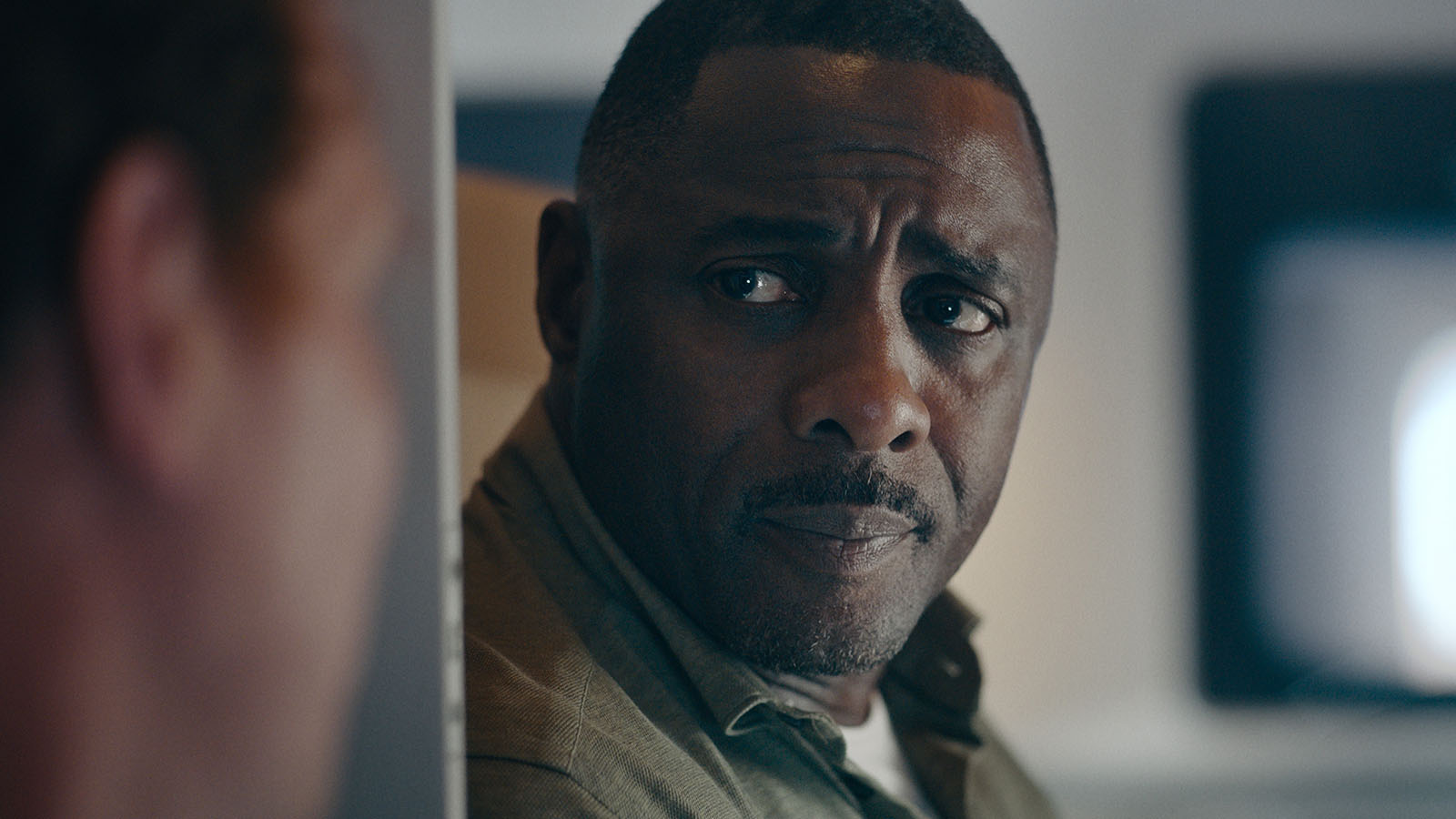
There was a text message sent that activated the sleeper agent on the plane. When we cut to the plane, it felt like not enough time had passed on the ground. Everyone was still in their same positions on the plane. It was a lot of messing around, literally doing a million different versions to figure out, “When does it feel right to go back to the ground? When does it feel right to get back on the plane?” It was a back and forth, wasn’t it?
David Webb: A lot of scenes were written as contiguous actions. Something was going on in economy and something was going on in business class at the same time. That was the hardest thing, trying to keep both plates spinning. Sometimes things were going on in the cockpit as well, so that was three different locations. That was hard, balancing which parts you had to lose to keep that sense of progression.
If you were to do it as written on the page, you would have to keep going backwards in time and then move forward again. There were quite a lot of omissions from the script to keep that forward momentum.

Robert Frost: I remember getting really stressed out. In the opening of my first episode, episode three, we have Zahra (played by Archie Panjabi), walking through London on her phone. She walks into a reveal of this location where they’re going to be for the rest of the series, the Collingwood House offices in central London.
Then we have the “bing” of an elevator, and we cut to her coming out of the elevator. I thought, “That’s a five-minute time jump! People are going to watch my episode and say, ‘He’s destroyed the real-time element! He doesn’t know, he doesn’t understand it.’” But no one mentioned it.
People are going to watch my episode and say, ‘He’s destroyed the real-time element!’
David Webb: We had a weird set of rules. I remember we had a big conversation, I think it was with Natasha or Mo, saying, “Can we do jump cuts within a sequence?” and the answer was very much no, you can’t.
And yet, we were able to do things like that, where we were progressing through big jumps of time. But we could not do a stylistic kind of jump cut within a scene just to get us through it.
MF: On a similar note, the geography of the plane reminded me of Bullet Train. The whole thing takes place on this train, you’re moving between these different cars, and you have to make sure everything feels right time-wise and geography-wise. Was there ever a time where you got tripped up in the geography of the plane?
David Webb: Yeah, one-hundred percent. On our walls, each of us had a map of the plane and a marker for where everyone was sitting. Jim was great and so was Ed Moore, BSC, the cinematographer. They created big steadicam shots following the characters through the plane, particularly in the opening episode, just to orient us, so that we knew where everyone should be.
In subsequent episodes there would often be another shot showing the whole plane or at least two cabins, so that you could be reminded where everyone was in relation to one another.

Our assistants were really good as well. They did character bins for us. All of the principal characters, including some of the supporting artists, had their own bin. They had their own bin of looks from left to right, from either side of the line, so that we could reorientate the screen direction.
Robert Frost: I used those so much. Our assistants had to break down the scene, the rushes, scene bins, ScriptSync, and then do these character bins. In the Avid, we had little folders of business-class passengers, first-class, and we could then click on the bins for each character.
There was seven or eight hours worth of Sam, stringouts of him sitting in his chair doing various different things that you could grab if you ever needed to. The continuity is the same for the whole series, so you could steal from wherever you wanted.
The continuity is the same for the whole series, so you could steal from wherever you wanted.
David Webb: With the assumption that cogs are always turning in his head and whatever his face is doing.
Robert Frost: Yeah, yeah. If you don’t know what to do in a scene, you could just cut to Idris looking like he’s thinking about something.
MF: It would be a little tough if he’s not actually in your show, but yeah, why not?
David Webb: I’m sure there’s some merit in any way, Matt. Whatever your show might be, stick Idris in it.
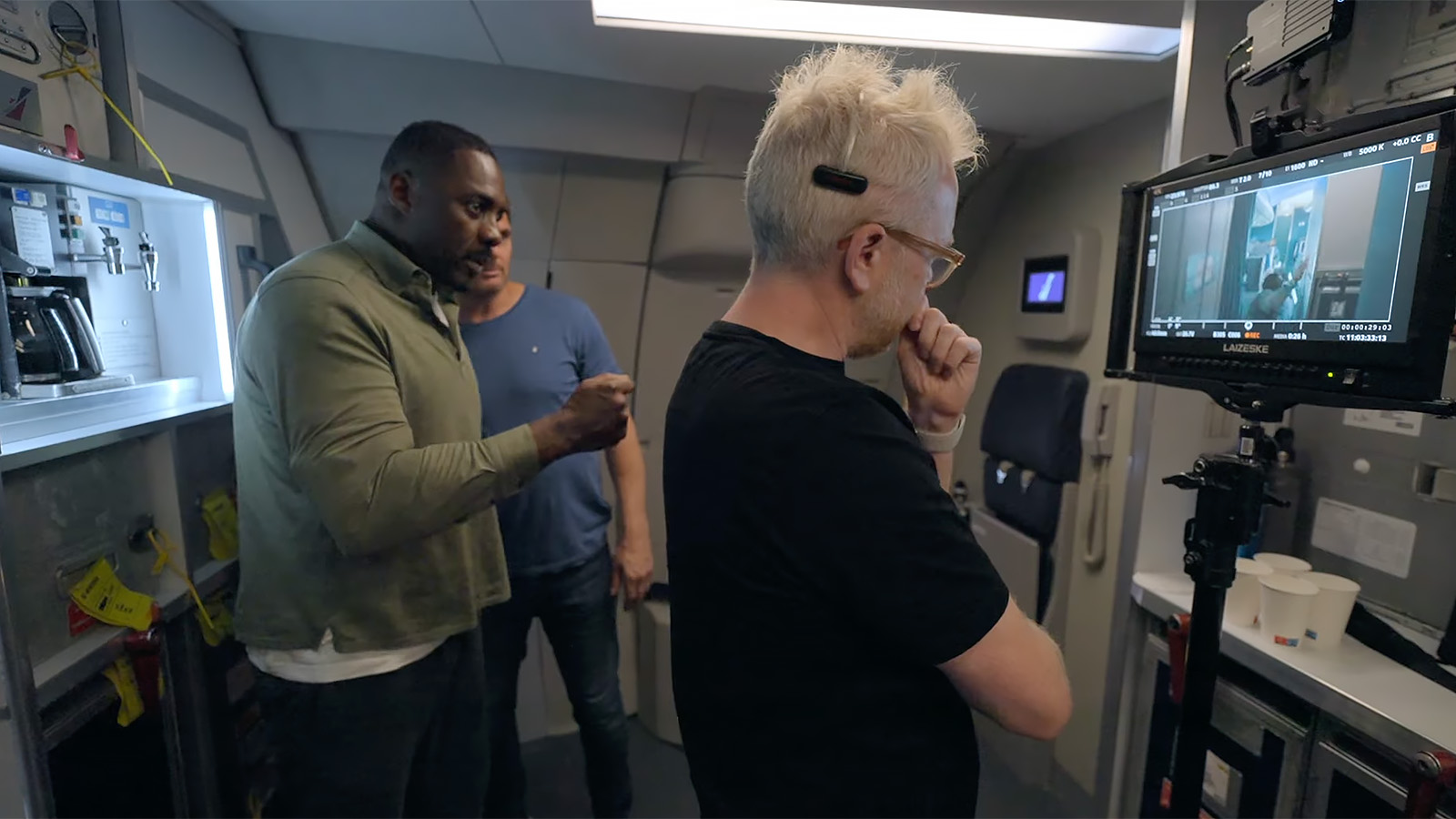
MF: I’m sure his agent wouldn’t mind. Once you both talked to Jim and agreed to do the show, what did you do to prepare?
Robert Frost: Well, we were at Final Cut, which is very swanky and lovely. That’s Dave’s baby. What is your title? Managing director?
David Webb: Oh, God, this is… yeah. So I’m a partner in a commercial company, Matt. We have sixteen commercial cutting rooms here, but we also built this place called The Lofts, which has thirty suites that we rent out to various productions.

Whenever possible, I like to cut on my home turf. It’s not always possible. Jim has been working here with me since that Heinz baked beans commercial. It’s home territory for him as well. We work here whenever possible. I’ve never really been into the working-from-home vibes. Have you done that, Rob?
Robert Frost: No, and I had the option to do it on a job. I prefer having that separation and actually coming into the office. I like having that commute time, listening to podcasts, maybe an episode of The Rough Cut on the way in, to get myself ready for the working day.
David Webb: I’m a big believer in working together. I think the best way to bring people up and to advance them in our industry is to have them be around other editors and be a part of a team. Whether you’re actively learning from other people or it’s just by osmosis, I think it’s essential to be in the cutting room and to work as a team, especially on something where you’re sharing so many assets.

Like I said, we shared those scene bins, and we also shared soundscapes. Every cabin had its own soundscape. Rob and I worked on those together to get them working in the offline audio cues. They were a kind of temp score. We had to make sure we weren’t all raiding the same temp cues, so that when Rob plays his edit, it didn’t sound like second-best because he’s using the same cue.
Robert Frost: Basically, we’re going to make sure that the whole show doesn’t have Sicario throughout the entire thing…
MF: Where have I heard that before?
David Webb: Oh, great, we’ve got a yellow haze on the film. That’s Sicario.
Robert Frost: Going back to the work-from-home thing, I don’t think there’s any way I would have been able to jump up to editor the way I did if I hadn’t been physically in the cutting rooms with David at Final Cut. Hearing the gossip from the directors, being there when they ask for your opinion, it’s a lot harder to do that over the internet, or over Zoom.

MF: How do you two stay in sync once the project begins?
David Webb: We’re constantly going in and out of each other’s suite and saying, “Have you got anything cool to show me?” Or, you know what editors are like. They’re terrible moaners. If you’re moaning about something, if you’ve got a scene that, for whatever reason, doesn’t seem to be firing on all cylinders, you can say, “Oh God, look what I’ve got to deal with today” and then you find a way through it. You talk your way through it.
We have that ease of communication. I’m happy for Rob to tell me something I’ve done is bad and I believe he is happy for me to do the same.
This is terrible. Why have you done that? Why have you cut that?
Robert Frost: Well, I learned that from you. I remember during the first couple of weeks of assemblies on Litvinenko, we would do almost daily viewings and, Dave, you were saying, “This is terrible. Why have you done that? Why have you cut that?”
It was good because half of the time I was able to explain why I’d done something, and that’s fine. I really enjoyed having that back-and-forth and watching each other’s work. You can’t be shy of what you’ve done. The sooner people are looking at it, the better.

David Webb: For me, the easiest way for you to be confident in something you’ve done is to play it for somebody else. If your insides curl up as you’re watching it, you know you’ve got to take another pass at it. Or, if someone raises an eyebrow and winces, you need to address that. It’s a good thing. You’ve auditioned it before you’ve shown it to the director. You want to make the best impression with the director.
MF: Let’s go back to the whole Idris-Elba-sitting-in-a chair-for-seven-hours thing. Talk about the amount of footage you had to work with. How are you able to get through all of those dailies? It’s kind of a controversial topic. I have had editors say, “Listen, there’s no way I can watch every frame of this.” Then there’s others that say, “It’s my responsibility to see every single frame.” What is your approach and how do you get through all of that footage?

David Webb: This is something that we talk about quite a lot. I had this conversation with Úna Ní Dhonghaíle. Úna is a model editor in that she will watch everything before she has a go at putting a scene together.
I’m at the polar opposite end of that spectrum. I will put an assembly down within the first five minutes of opening a scene bin, and then watch the rushes, which is a slightly odd way of doing it. Putting down that framework helps inform my decisions moving forward.
Did we get through everything every single day? We had a good go at it, but sometimes we were getting four right hours, weren’t we, on a regular basis?
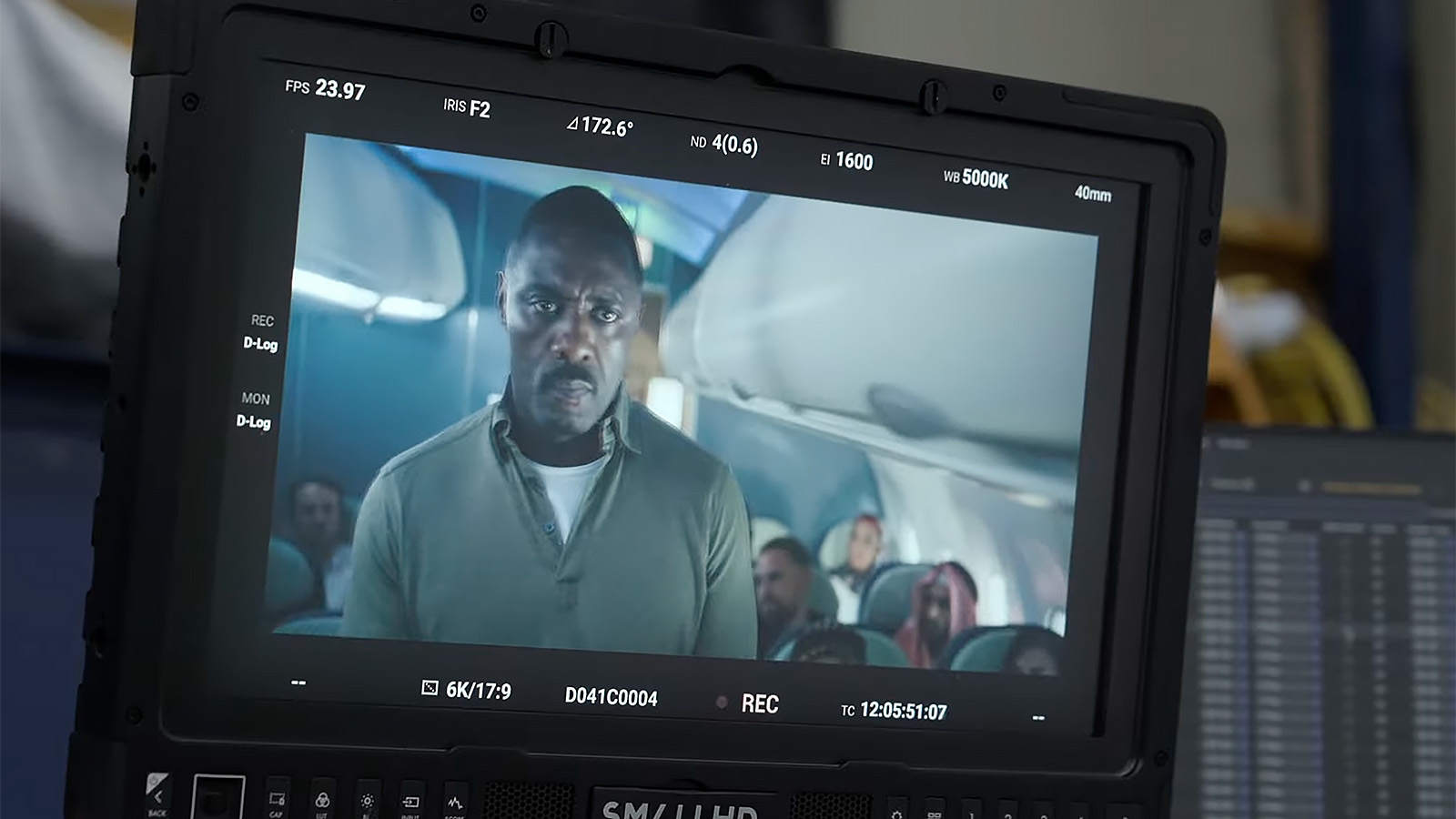
Robert Frost: It was a lot. I watched everything, but I watched it in quad split. I’m not going to watch all of the cameras separately. You can get through it fairly quickly that way, I guess.
David Webb: I do the opposite. I can’t watch things in a quad split. I watch individual sides of a two or three-camera setup.
MF: How many cameras were you getting?
Robert Frost: Somehow, they got two cameras into that space. Always two. You would always get “A” camera main coverage and then “B” camera doing something cool, or doing profiles or cutaways of weird people looking around corners of chairs and things like that.
David Webb: There were days of up to four cameras, because we’d have security camera feeds from various different perspectives, inside the cockpit perhaps. Some days were really heavy.

MF: Let’s talk about the first episode. You’re setting the stage for the entire series. If you don’t hook the audience in that first fifteen minutes, you’re not going to get them. David, you had that challenge?
David Webb: I did.
MF: There are some really interesting things about a flight. You can kick off an episode naturally by using the captain’s announcement. You can set up the context there. Tell me about getting that show going properly in that first ten or fifteen minutes.
David Webb: That captain’s announcement is a great exposition device that you can use to introduce some key elements. Getting the authentic feel of boarding a plane was something that we were excited to do. We quite like working within that soundscape. That sounds really simplistic, but we liked getting down to all of the noises and sounds of the different cabins.

Some scenes got cut before we even got on the plane. There was a much longer scene of… What’s the character’s name, Rob? My memory is shot to pieces by virtue of being a lot older than Rob. Who’s the character that smuggles the guns onto the plane?
Robert Frost: Oh, now you’re making me blank.
David Webb: Anyway, there was a whole scene of him getting through security and we ended up abridging everything. We thought, hopefully, if the audience looked back, they’d be able to understand what may or may not have happened there. Rather than flagging it up front, we would bring that out later on.
Sorry, I completely digressed. George Kay is really good at writing these humdrum, everyday-life character beats. They are a really nice counterpoint in an action-thriller. I say ‘action’ in parentheses. Those scenes show us families that are squabbling over screen time, just small incidental pieces like that. There’s the argument with the flight attendant about where the cabin luggage is going to go.
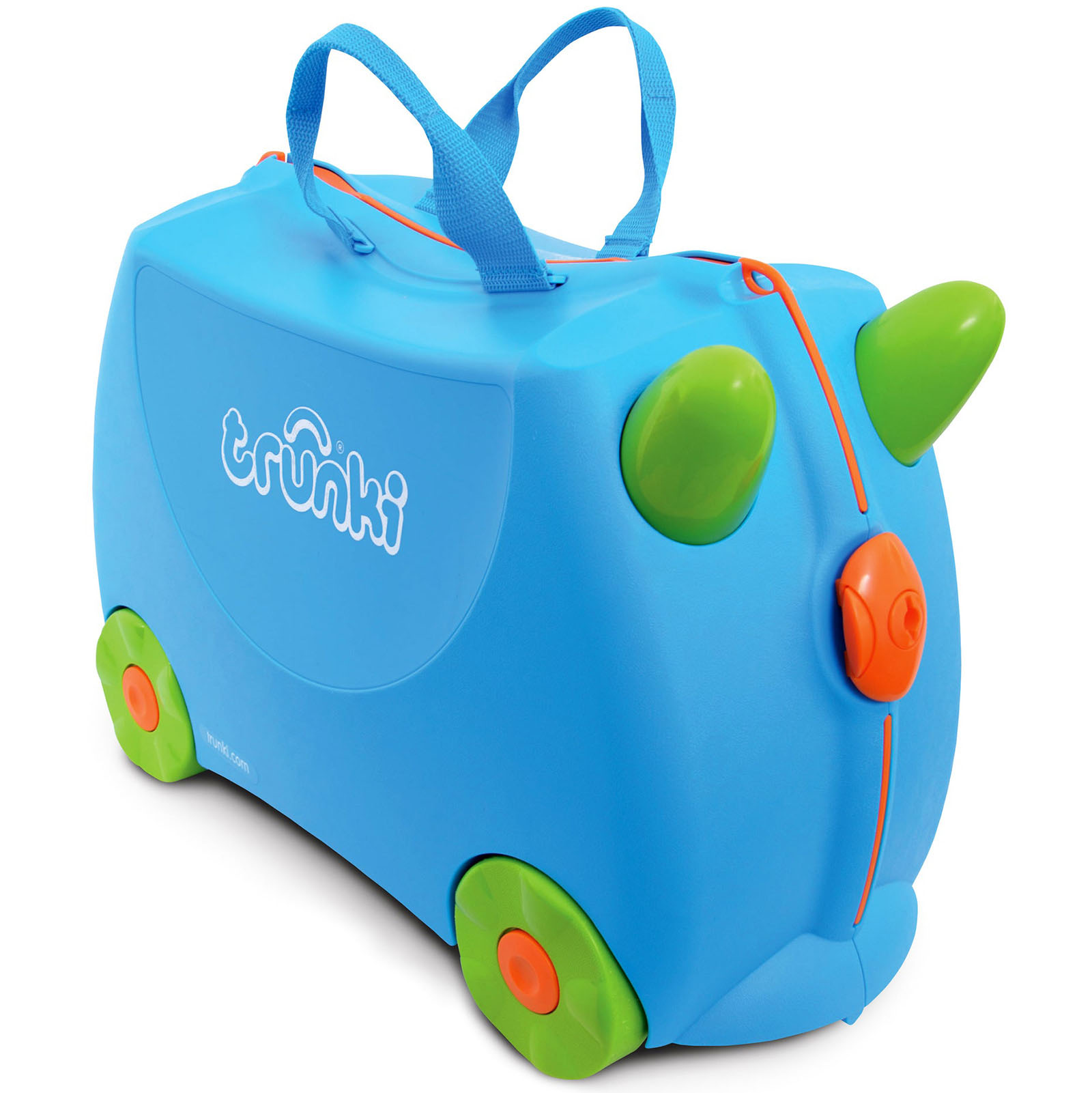
It is quite an odd sensibility. We were talking about how people were going to receive this weird British sequence about people squabbling about mundane things when their plane is about to get hijacked. They followed that all the way through, right to the last episode where the Trunki is still a character. Character people didn’t look at that.
Robert Frost: They got it sewn up.
MF: It’s almost a sense memory thing for the audience. If you’ve ever been on a plane before, you instantly felt like you were on that plane. It also helps with the tension later on, when there isn’t a lot of action. The tension really comes from that claustrophobic feeling of being a part of it, which I thought you guys nailed. No question, just a compliment.
Robert Frost: We were really excited about all the sounds, weren’t we? Dave, you were kind of obsessed with sound.
David Webb: Every flight I went on, because I knew this was happening for at least 12 months prior to that show, I would be recording the whole flight to get soundbeds to use in the scenes.
Robert Frost: It’s just exciting, especially when the whole thing is on the plane. I remember getting really excited about, “Now we’ve got a shot in the bathroom so I can add a slightly different fluorescent hum to it.” Cutting between those different environments, when you get the sound working as well, is very satisfying.
David Webb: It’s really nice to work with someone that is so engaged by that as well. It gets you there a lot quicker. If someone else has done an amazing environment for the toilet, you’re happy to nick it rather than spend an hour building it yourself.

MF: I have no follow up for that. Rather, I’ll ask you about another choice you made in that first episode. Idris Elba is on his phone texting his ex-wife or his wife that he is separated from… I’m not exactly sure if she’s his ex-wife.
David Webb: Let’s say they are separated because I’m not sure either.
MF: Okay, good. So he’s having this text exchange with her, but you cut to that very quickly. You don’t really give the audience time to clock everything that they’re saying in that first shot of it. You go back to it a minute later, and you have a little more time to see what they’re writing to one another. But why that choice?
David Webb: When we started cutting it, we only had three or four scripts in existence. We weren’t quite sure where these character beats were going to go. Some of it may have been that those texts changed a few times over the duration of the show creation.
It’s also about keeping the mystery around Sam. Everyone thought Sam was going to be ex-MI5 or military, or have some superhuman capability, when really he’s just a guy that’s miserable about being separated from his ex-wife.

Robert Frost: It didn’t originally cut to the ground that early, is that right? Because I remember you used to get the plane off the ground. They’d taken off, then it was credits, and then it went to London. But it ended up being that Sam sent the message and then you see Marsha (played by Christine Adams) waking up, right? I remember that being a change.
David Webb: It was, and I can’t for the life of me remember why. I think the pre-credits used to end on the message, “Don’t get on that flight.”
MF: It’s a good message. Let’s take this very specific question and up-level it to a more philosophical one: how do you feel about doling out information to the audience?
David Webb: My feeling is, always less. We had a discussion with the network, Apple, about how much information is conveyed to the audience. Audiences are really smart nowadays. I showed Hijack to my fifteen-year-old as I was cutting it and she got every inference and little nod that we had included just through a gesture or a look. There was quite a lot of dialogue that was cut, which was more exposition.
She also said it was the most boring thing she’d ever seen.
She was my litmus test for whether or not it was communicating. But she also said it was the most boring thing she’d ever seen, so she’s not always the best judge of how things might go down.
MF: It’s not your usual action hero show. There are moments when there’s physical action, but most of the series’s energy comes from the tension that you create. Are there techniques or approaches that you are cognizant of while you’re editing? Or is it all instinct in terms of creating that tension?
Robert Frost: That’s interesting. I’ve been trying to think about this. It might be instinct, because when you get an extended sequence, like in episode three, where there’s a character crawling around on the ground, searching for a bullet. It’s so much material and you don’t know where to start.
I’ve realized that I’ve been thinking, “I’ve seen scenes like this before. How do they play out? How long are they holding on the shots for?” and then I build something that feels like what I’ve already seen before. I guess that is what instinct is. You get a sense of what the material is telling you.
Jim also operated the “B” camera. You can tell when he’s finding shots. He’s almost telling you, “Use this.” Or, if “B” camera is suddenly doing something completely different on the fourth take, clearly they’ve talked about that on set. That’s something they want to put in the show. There’s lots of hints there in the material sometimes, cutaways or certain moments.
David Webb: The one thing you need when you’re building tension is as a release valve. You can’t just endlessly build tension. What’s that musical thing where you’ve got an endlessly rising note?
Robert Frost: The Shepard Tone.
David Webb: Right, the Shepard Tone. It can’t be like that. You have to have moments of visual sorbet, where you put a pause on it. Luckily, we had other places to cut to, so we’d cut off the plane and come back to the ground. Having those breaks allow you to release your breath and then build back up to the next tension build.
MF: A tension palate cleanser.
Robert Frost: A tension palate cleanser.
David Webb: A visual palate cleanser, exactly.
Robert Frost: That goes back to us showing each other rough assemblies. I remember showing you that sequence, thinking that it was as tight as it could possibly be. Then you would constantly say, “No, no, do you need that? Do you need that? It needs to be half as long.” You would come back to it every few weeks, chop some more frames.
I tend to be brutal about getting rid of things, because I know I’ll always have them available to put back in.
David Webb: It was quite a long schedule where Jim was shooting, so we were able to keep refining things. I tend to be brutal about getting rid of things, because I know I’ll always have them available to put back in. Would you say your instinct is to protect stuff a bit more, Rob?
Robert Frost: Yes. If there’s something I’ve worked really hard on, I at least want the director to see it, because maybe that spins off into something else. I’m always hesitant to cut stuff out. Maybe that’s because I’m still relatively inexperienced compared to you.
MF: Since David is the wily vet here, Rob, I thought we would throw the “Let’s Do a Scene Breakdown” bit to you. You had a sequence that I thought was quite impressive in episode three, ‘Draw a Blank.’
Going back to the whole intercutting thing, you have Marsha, Sam’s ex, giving a speech about physics. I won’t even try to figure out what she was talking about. Quantum physics, something about physics.
David Webb: Schrodinger’s cat.
MF: I have no idea what that means, but I do remember that part. She’s giving that speech, but you’re jumping around between her speech, what Sam is doing, and what’s happening on the plane. Her voiceover speech carries that sequence. That’s a pretty complex bit of editing. I can see why David kicked you up a notch. Tell me about putting that together.
Robert Frost: That was a fun sequence to do. We had a lot of time to tinker with it, but those parallels between what she was saying and what was happening on the plane were definitely always in the script.
At that point in the story, no one actually knows about the hijacking. That sequence became about what’s going on inside the plane versus what everyone thinks might be happening on the ground.
The whole intercut-y part of it was not as scripted. It was originally two separate scenes. Marsha’s speech was much longer, and we originally returned to hear the end of it. We quickly realized that it was a bit boring to come back to the speech, so we merged those scenes together.
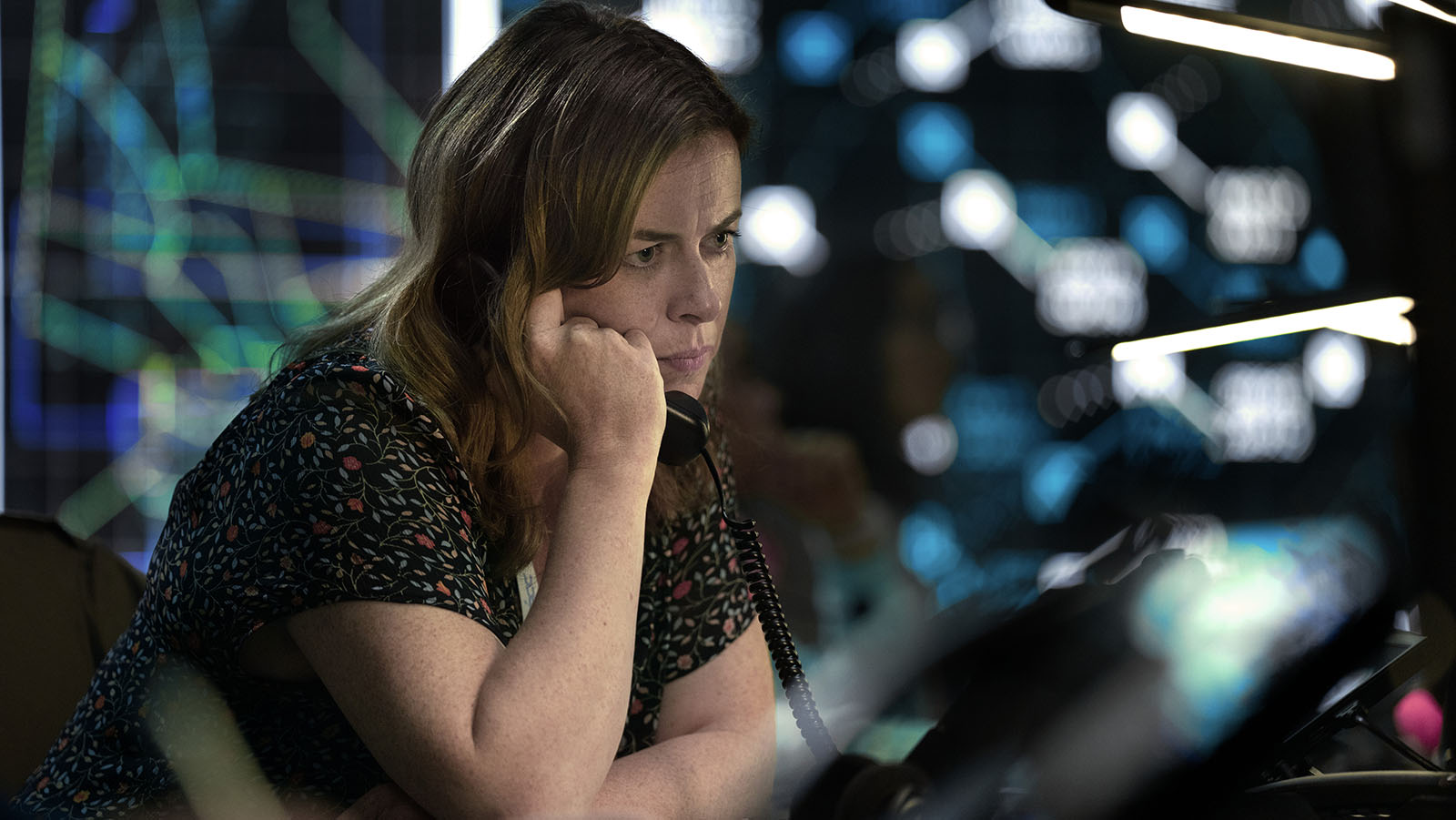
I can’t quite remember how it came about, but I realized that we really needed to get on with the scene. I started playing around and put Kai (played by Jude Cudjoe) leaving the flat over the speech. Then I realized, “Oh yeah, it kind of works.” It turned into a montage. I kept going back to those character bins and stealing more shots from other people’s episodes to make my amazing montage work.
Then we ended up extending the speech. We wrote a load of ADR and got Natasha to record it for us as temp. It was really just to tie the speech together, and to tie together the situations of the characters on the plane. It was a fun one.
David Webb: Rob also had the scene where everyone says, “Wow, did you do that scene?” I have to say, “No, Rob did that.” It’s from episode six, where Amanda (played by Holly Aird) gets up, puts her hair in a ponytail, and shoots the pilot. That was a sustained rise for a good four minutes, wasn’t it Rob? The end of that episode?

Robert Frost: That was definitely the hardest bit of editing I’ve ever had to do. There was a lot going on. Making sure that the raid on the airfield, the reactions to that from all of the people at Collingwood House, and the plane stuff were just the right length so that you didn’t feel like you were missing out on something.
David Webb: We were also trading bits from each other’s episodes in that one. There’s a to-and-fro about, because it’s obviously joined-up action. You can come out of one scene, one episode, and into the other at any point. So we were trading backwards and forwards.
Robert Frost: All the stuff with the news breaking of the hijacking and with Kai, the son, and his journey downstairs to try and call the police. A lot of that was originally in episode seven, wasn’t it? Then I pulled it back to six, just to make my episode better. Take all the cool shots and put them in my episodes.
Take all the cool shots and put them in my episodes.
MF: Well, that’s what editing is. You take all the cool shots and you put it in your episode.
Robert Frost: That’s exactly right.
MF: Let’s talk about some visuals. Being on a plane, you’ve got a lot of screens everywhere and those screens actually do play a part. Cell phone screens and the TV screens in the back of the seats, those factor into the story. Those are elements that are used in the story.
I read that the TV screens were actually fed on set. The images on the screens were done practically. Was there anything that you guys had to do? I have to think there’s got to be some tweaking.
David Webb: Massively. What was said on those screens was in the script, but it certainly isn’t what ended up on screen. We ended up repurposing those graphics to serve the story needs. It was practical in the first instance. Lighting and everything was there. But the content and the text changed over the course of the development of the show.
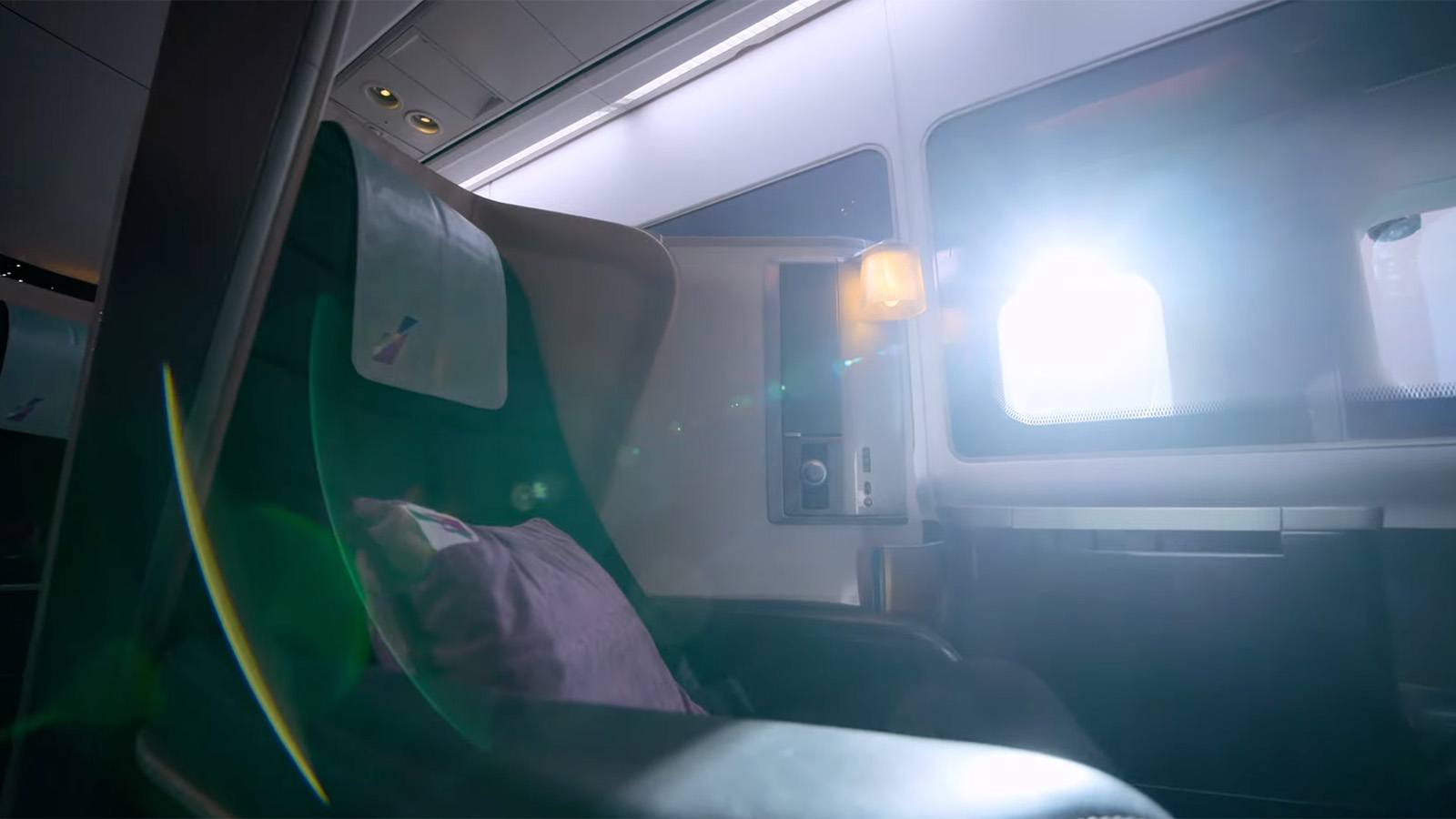
Robert Frost: The flight path changed too. That was such a big story point, them veering off and then crossing back over, and they didn’t quite nail it with the graphics on set.
They sent us all of the constituent graphics and we built it ourselves as a temp. It was helpful to cut to a map that showed what the plane was doing. It needed to make sense.
David Webb: Those graphics are another one of those weird moments of idiosyncrasy. You have a pirate ship, a backgammon chat game with a guffawing pirate on it, which is a strange thing to chuck in. But we embrace that.
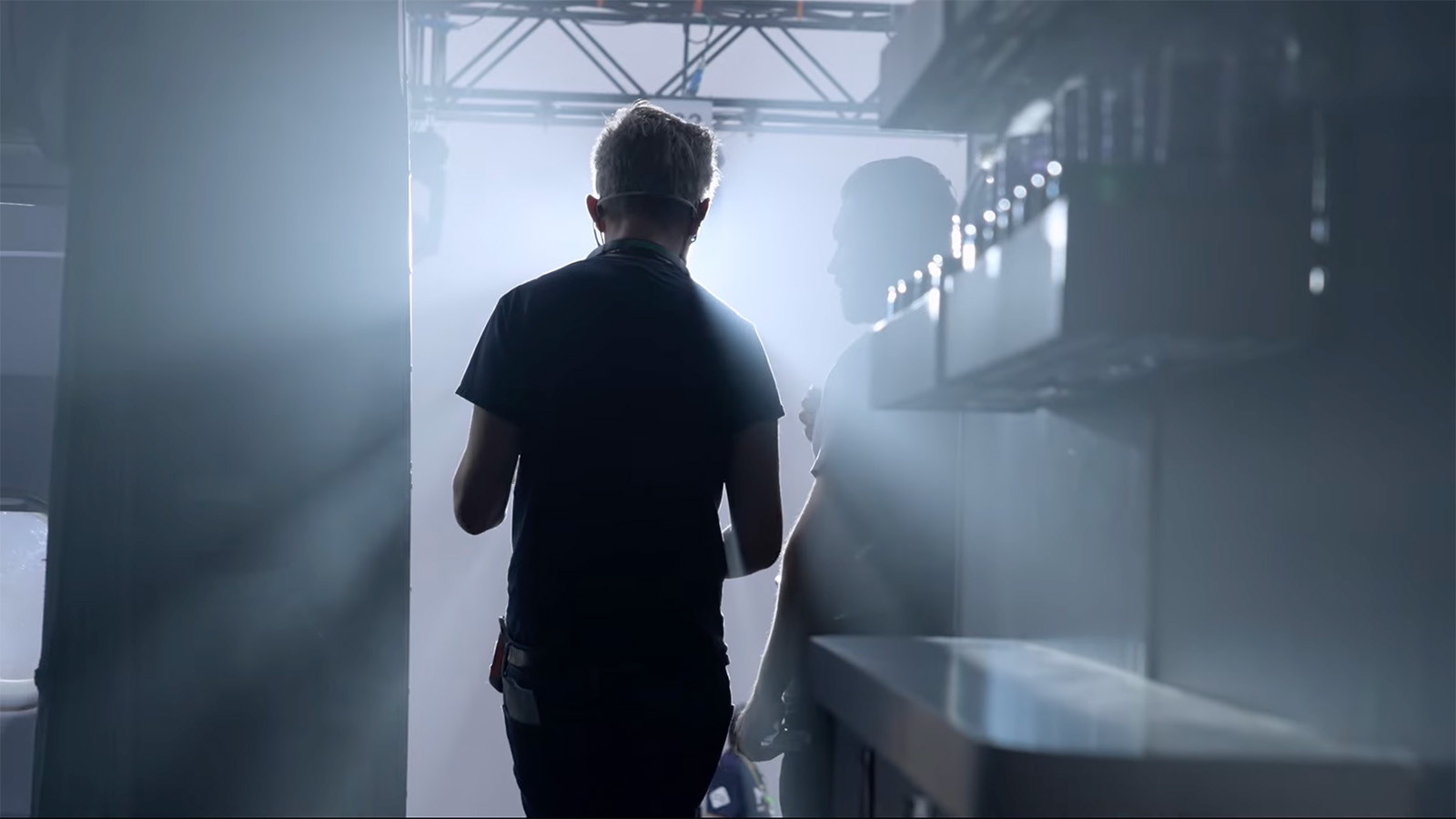
Robert Frost: I remember you saying, “Is this bad? It’s just a scene of people texting each other.”
David Webb: I was thinking, “Oh God, how long can I be on this? I’m watching two people text each other. Is it dramatic or is it just incredibly dull?”
MF: Well, you threw in a guffawing pirate.
David Webb: You put a rising-tension string over it and somehow it becomes dramatic.
Robert Frost: Sicario soundtrack and you sort of just move on.
MF: I think you guys are establishing the new rules of action. That’s great. In addition to that element of the effects, I believe that the show was done with what’s called the Volume. Is that a new experience for you? Did that have any impact on the way you work at all?
Robert Frost: It meant that I wanted to go to the set, because I’d heard about the Volume. I’d listened to a lot of interviews about how it works. I was fascinated by the technology. The camera didn’t necessarily match the actual Volume screen, the kind of parallax moving. It was just the fact that everything was in-camera.

David Webb: What Ed, the DP, did manage to do is program every single window so that no matter where you were at any point in that flight, the light was exactly where it should be. The direction of the sun over the course of the flight was consistent, so you never had to worry about lighting. Occasionally, it fell off the edges of the Volume, so they had to repair it through the windows.
But it helped massively, as far as I’m concerned. You’re mostly getting two or three hours of plane footage a day, which becomes quite relentless. If you’re also contending with looking at green screen rushes every day, I think that would have made it a much less fun experience.

Robert Frost: It looked amazing. I totally bought it.
David Webb: The one thing that we thought was a real boon was the fact that they went and shot all those airplane exteriors. They actually did it practically. They shoved a couple of planes up in the sky to film a blank airbus and then just wrapped the decals on it. That meant we could really lean into those exteriors and use them. We really mined them a lot, didn’t we Rob?
Robert Frost: There were hours of it. For the longest time we had flight simulator temp, didn’t we? Jim and Ed got really nerdy about the plane stuff. Jim basically set up a flight simulator to fly the exact route and then filmed it from loads of different angles with the virtual camera.

David Webb: The sound team did the same. For episode seven, they actually simulated the crash landing so that they could record all of the alarms and noises and everything as it made that approach and made the crash landing. There was a real level of authenticity put into that sound detail.
It never, ever satisfies the plane geeks.
It never, ever satisfies the plane geeks. They’re always saying, “That’s not what it sounds like!” But they certainly tried their best to do it right.
MF: Well, let’s talk a little bit more about sound. Needle drops. In the first episode, the prominent needle drop is Sam Cooke’s ‘Trouble Blues’. Then ‘When Will I See You Again’ is in the second episode.
You have that needle drop in the show prominently and then it comes back for the credits. Was that something that you hit upon? How was that prescribed in post production?
David Webb: Jim and I both love using well-placed needle drops. It’s a kind of a character beat for Sam. We had a different song in there for the longest time. We thought it was great, and then we found out it had been used in a feature film a couple of years back. Being the music snobs that we are, we ditched that and started looking for something new.
Then we happened upon that Sam Cooke track and we couldn’t find any other usage of it. I’m sure someone will find it somewhere, but we were just chuffed. It seemed to set the right mood. It didn’t directly comment on what we were seeing, but it informs what’s going on at some level.
We meant to keep that throughout the whole series. Episode two had a track which was written into the script, the song by The Three Degrees, which was a plot point. But after that we thought, “Let’s do a needle drop once an episode.” The episode where we didn’t do a needle drop was Rob’s episode, episode six. That one didn’t need it.
Robert Frost: That’s right. It was such an intense ending. It was so big that going into any track at the end just didn’t feel right. Again, we were going back to “What have I seen in other shows?”

I was remembering Game of Thrones. When a significant character dies, the credits are over silence. So I thought, “Let’s just do that.” Jim said, “Let’s see if it works” and we just laid the ambient sounds of the plane underneath. It was so much better than any track we could find. Plus, it meant that I didn’t need to find any music. Dave’s a master at it. My music knowledge doesn’t go back very far.
MF: Before we wrap things up, I wouldn’t mind talking a little bit more about the editor-assistant relationship. When we last talked about Sex Education, there were four editors on that show and, Rob, you were the lead assistant for everybody. Is that correct?
Robert Frost: That’s right. It was me, and then for each season, there was a second assistant as well.

MF: That seems like a lot of work. It was sort of the same for Hijack. There are three editors, but I think James Stubbs is the first assistant. So, the same model. You have a second, but there’s one first assistant for everybody.
Robert Frost: But we each had an assistant, didn’t we, for the start? Dave, you had James as your main first and I had Michal Zak. He was the first assistant for my block of episodes, although they shared duties. We had two seconds as well.
David Webb: There were more, but James ended up staying throughout the whole project.
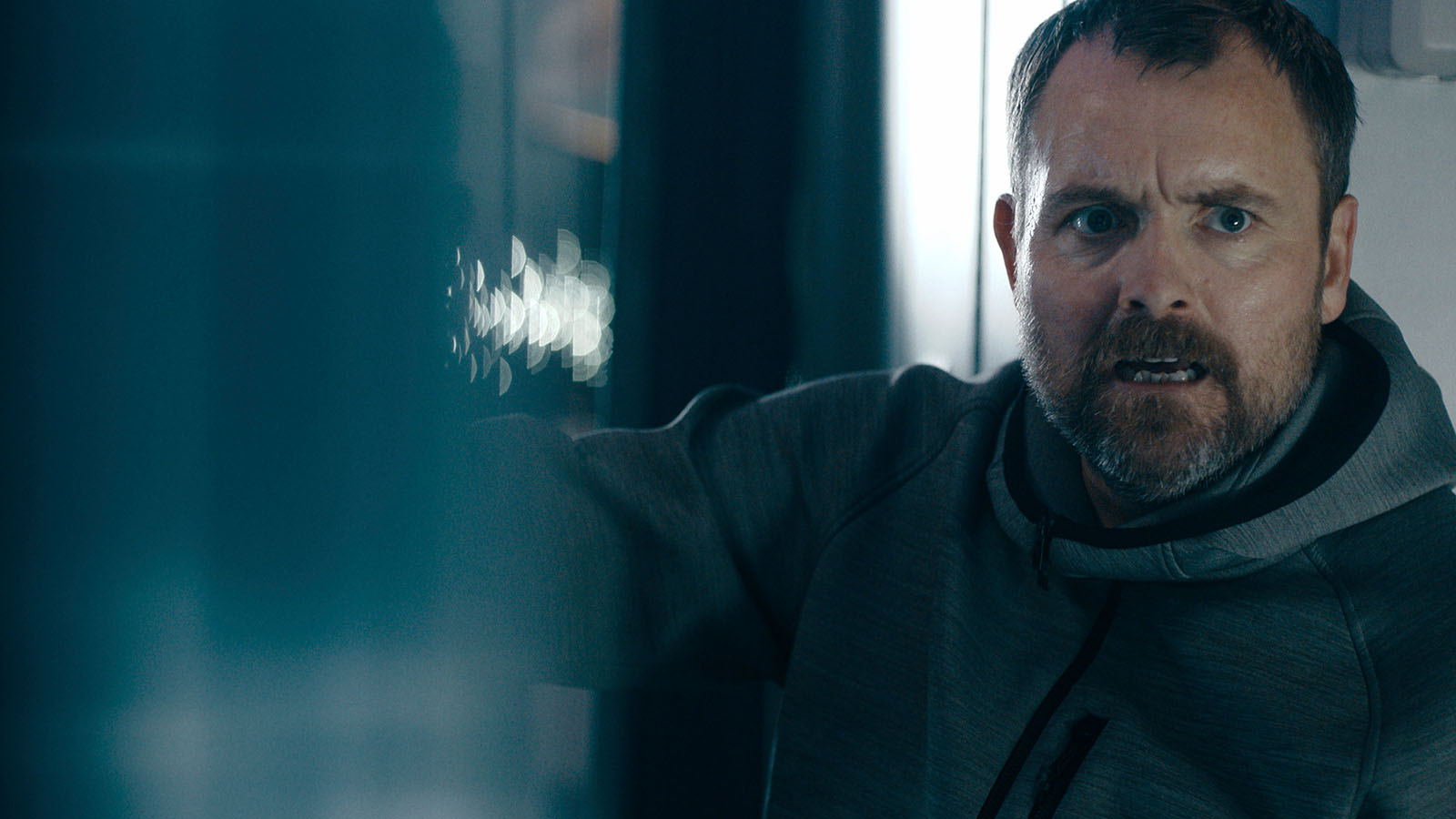
MF: Rob, let’s go back to you. On Sex Education, you had to support all four of those crazy editors. There’s the workload, but did they also each have their own way of working? Or was it assumed up front, “This is going to be our process for everybody. It’s just me. I can’t be doing bespoke assistance for each individual editor.”
Robert Frost: I wasn’t confident enough to say that on season two. I did whatever I was asked. Dave, you used to have your audio set to center, but Steve liked it alternating left, right. That meant that I had to remember to change that when I was exporting different things. It was a minefield in season two. We knew each other a bit better on season three, so I knew when to say no.
To be honest, all of the editors on Sex Education were fairly self-sufficient. As long as we were giving them the scene bins, they’d be off and away. They all worked like Dave. They’d have the scenes cut by the end of the day.
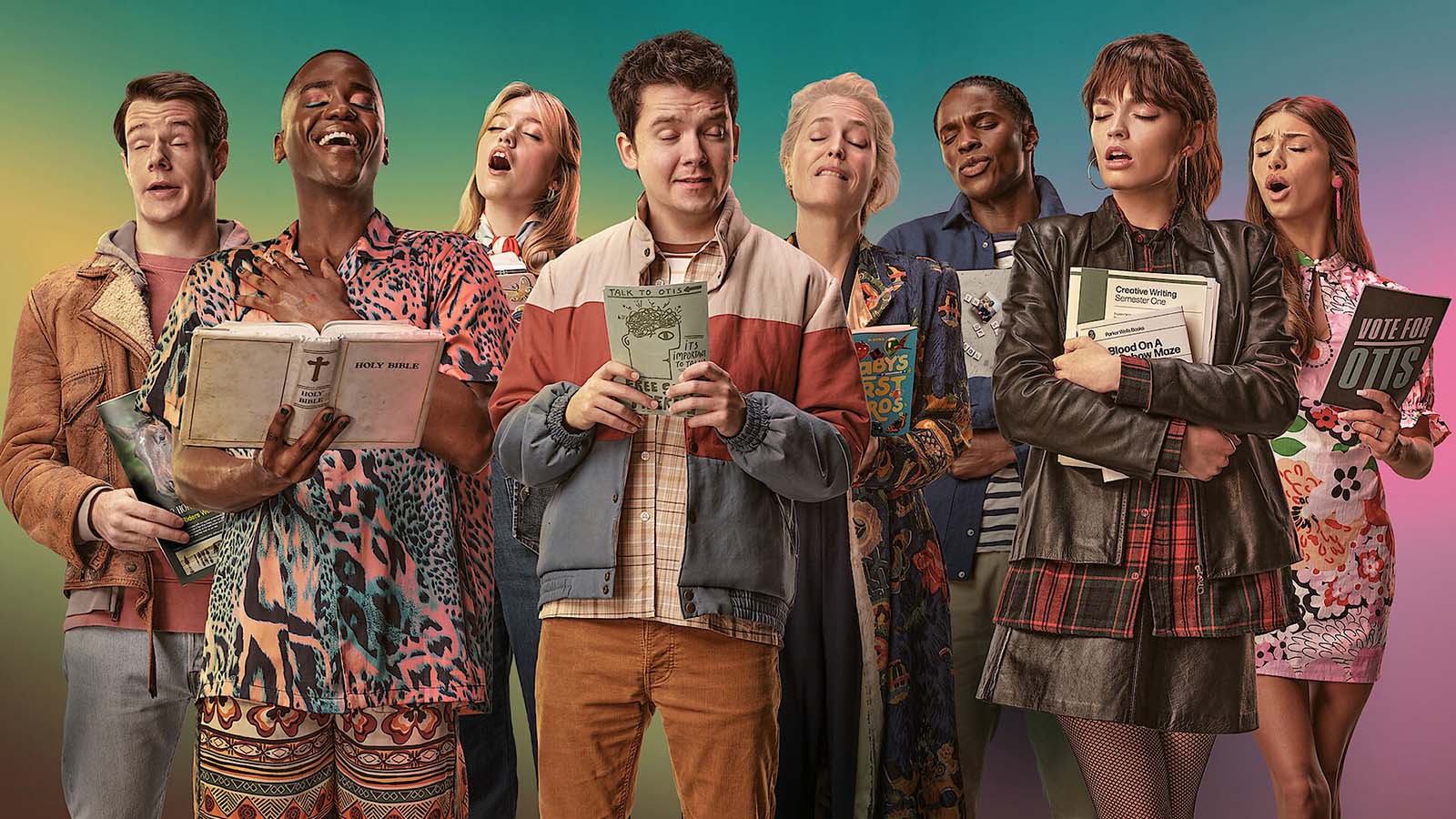
I was doing a lot of the temp sounds and making sure that I was doing the fun stuff that I wanted to get my foot in the door with. Any time there was an opportunity to assemble or do sound work or temp VFX, that’s what I was prioritizing.
Sometimes that put me on the back foot with the post supervisor, Natalie Silver, who’s amazing and a really good friend. But I do remember once saying to her, “I’m an assistant editor. I’m always going to do what the editors tell me first. Don’t worry, I’ll get that export done by the end of the day. But I’m going to do this bit of editing first. I want to make sure that I impress Dave, Steve, Izabella, and Phil.” Hopefully that worked out.
MF: Do you find that David’s process became your process? Did being his assistant for a long time influence the way you work and the way you set up your environment?
Robert Frost: Absolutely. I’ve never thought about what my own approach would be, so I think I naturally started to do what Dave did. All the other editors that I’d ever assisted would have the frame view in their scene bins, but Dave has a list view with the shot descriptions. That seemed really bizarre to me, but it’s how I work now. I can’t imagine doing it any other way. Also, Dave’s approach to how he builds a scene is now my approach. I do the same thing.
That seemed really bizarre to me, but it’s how I work now. I can’t imagine doing it any other way.
MF: Well, when you start off editing bean commercials, you’re kind of prone to List View.
David Webb: Weirdly, it’s the opposite in advertising. You end up making selects for hours before you even start work, but that’s because you’ve got a week to do a thirty-second commercial. You’re going to use that time somehow.
I think you learn from assistance as much as you learn from editors as well. Everyone has a different way of interacting with Avid or whatever bit of kit you’re using. Maybe there’s someone out there that knows how to do everything the best way, but whenever I work with other people, I always learn new stuff. You try to bring that into how you use the Avid.
MF: Beans pay the bills, but you also did a lot of music videos. That’s something that came up in a recent interview with another editor. It’s not something you hear about anymore. It’s not the same world. Music videos still happen, but it doesn’t seem like that short-form skill set is being applied anymore.
David Webb: It’s a real shame. I think it’s such a fertile training ground for people to get a sense of musicality and rhythm and be experimental rather than following rules. There’s not the proliferation of music videos that there were previously.
In the UK, you don’t really get paid for doing them. It’s a strange industry that asks an editor to work for five days for a couple of hundred quid, but that’s the music video industry. It used to be that you’d do that with the hope that at some point a decent paid gig would come around, but now there are no paid gigs in the music industry. It’s a difficult road for people to go down.
MF: Despite my better judgment, if I actually have any, I am going to ask this last question. Rob, David has referred to you more than once as ‘Honey Chicken’. If you care to, please explain the origin story behind that. I guess if you don’t, David will, so you might as well.
Robert Frost: I knew this was coming. Honey Chicken has actually been the best thing that’s ever happened to me. It came about because, on Sex Education season two, we finally all went for drinks after work, which is quite hard to organize. We had been out for a couple of hours. I was getting pretty hungry and I wanted to leave.
Honey Chicken has actually been the best thing that’s ever happened to me.
David Webb: Rob, can I just stop you there? It hadn’t been a couple of hours.
Robert Frost: Yes, it had! It had been at least two hours. I was looking to get the tube home, and my partner had made some lovely honey chicken. So I said, “I’m just going to go. I’ve got honey chicken waiting for me.” I don’t know why you all then decided to call me Honey Chicken, but that’s what happened, and it stuck.
It’s actually been really great because people from Netflix started to hear about Honey Chicken. I think Nat, the post supervisor, changed her email. She thought it was only for her, but then any time I was on a thread I was coming up as Honey Chicken.
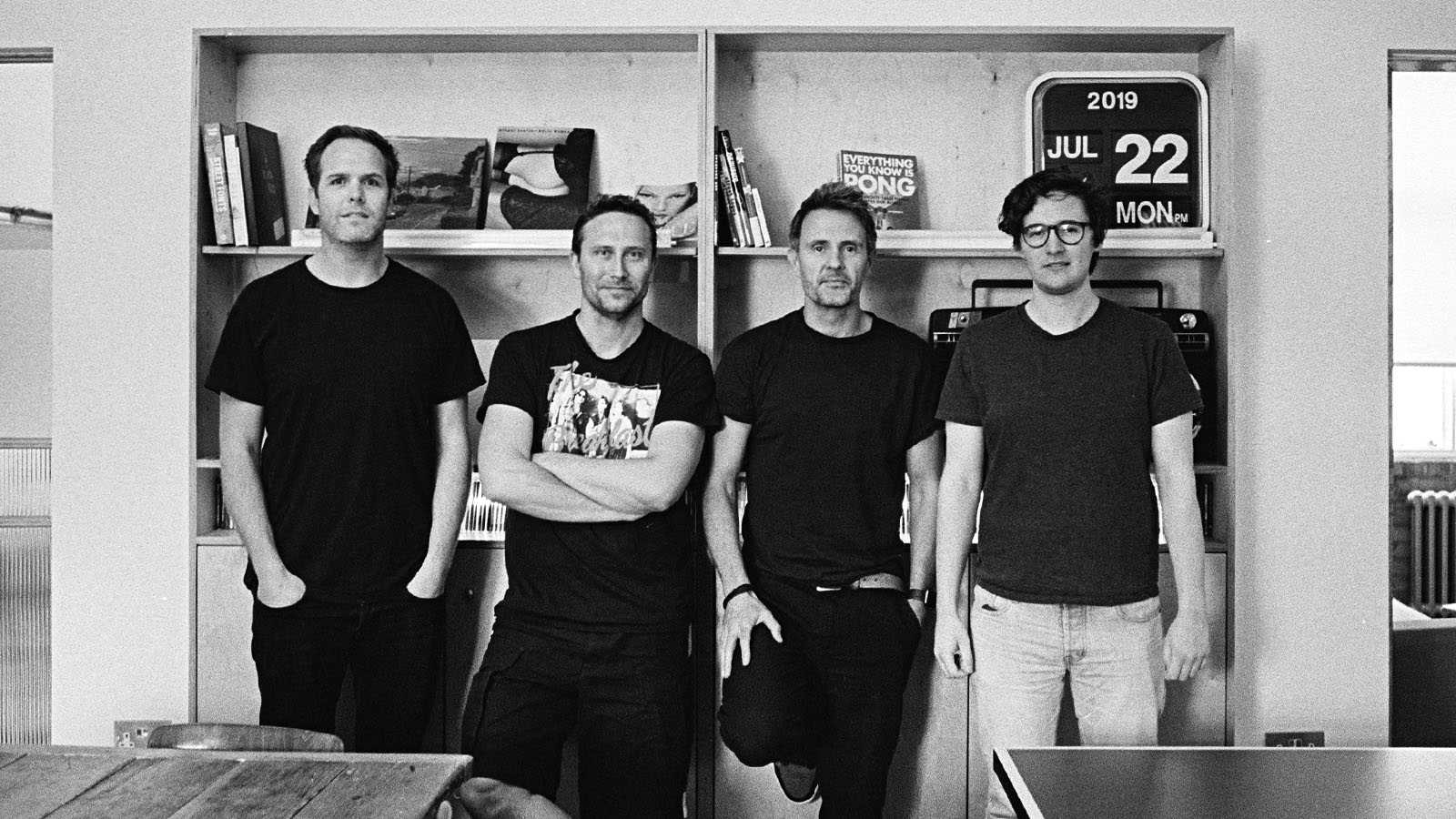
It became a whole thing. I remember there was a Netflix call and the person there said, “Are you okay with people calling you Honey Chicken? We want to make sure that you’re not being bullied in the workplace.” I had to say, “No, no, no, it’s completely fine!” At least people knew who I was.
David Webb: I have to say, I’ve since done both the Netflix and the Apple Respect and Anti-Bullying Course, and I passed with flying colors. But perhaps I wouldn’t have done so in a previous life.
I was at a Netflix mixer the other day. I was chatting with one of the directors at Netflix, one of the creative team, and I introduced them to Rob. She said, “Ah, Honey Chicken!” So yes, his name is quite a good door opener now.
Robert Frost: I feel like I need to change my IMDB. That is my work name now, my stage name.
MF: Well, fair is fair, Rob. Do you have a nickname for David? One that’s at least mildly family friendly?
Robert Frost: No, I’m not a nickname person. I don’t know what your real name would be, Dave, I’m sorry. I’m just so scarred. I’m just so… He’s such a bully in the workplace. I just don’t know. I couldn’t really say anything without fear of being fired on the next one.
David Webb: It’s not really like hazing. I do remember the next day coming in and saying, “Rob, is this all right if we call you Honey Chicken?” He said yes, but maybe that was just because he’d been bullied and he wasn’t in a position to say no.
Robert Frost: Not at all.
MF: Maybe next time we can work something out with beans for David.

